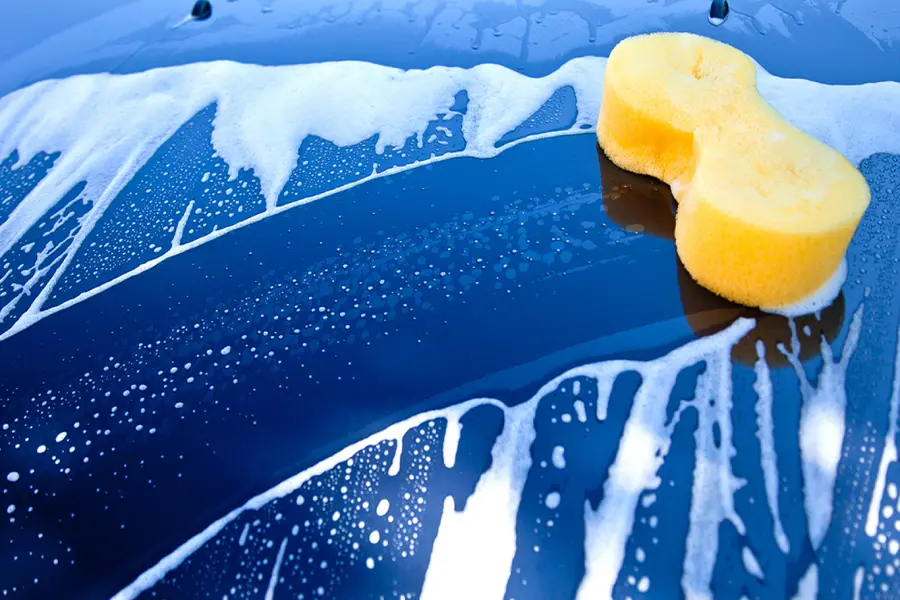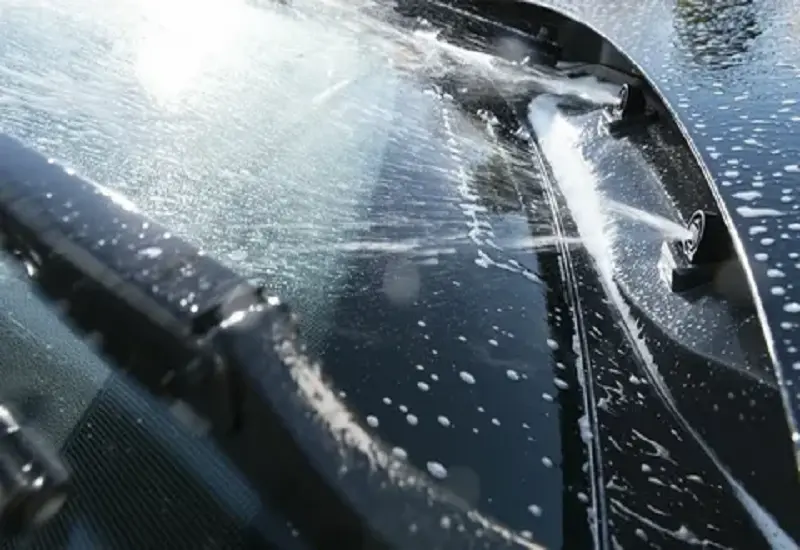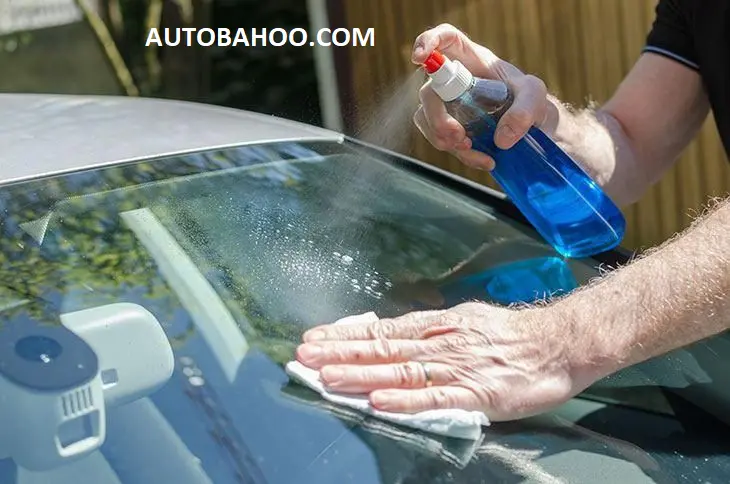How Much Screen Wash Does a Car Hold?
The amount of Your Screen Wash your vehicle can hold can vary significantly depending on the make, model, and year. Smaller, compact cars typically have screen wash reservoirs ranging from 2 to 4 liters, while larger SUVs and trucks may have capacities upwards of 5 or 6 liters.
The Critical Importance of Windshield Maintenance
Driving is more than just controlling a vehicle it’s about maintaining clear visibility and ensuring your safety on the road. Screen wash maintenance represents a fundamental yet often overlooked aspect of vehicle care that can dramatically impact your driving experience and safety.
Average Screen Wash Reservoir Capacities by Vehicle Type:
|
Vehicle Type |
Typical Capacity Range |
| Compact Car |
2 – 4 liters |
|
Midsize Car |
3 – 5 liters |
| SUV/Truck |
4 – 6 liters |
| Luxury/Large |
5 – 7 liters |
It’s important to note that these are just general guidelines, as the exact capacity can vary even within the same vehicle class. Always refer to your owner’s manual or check the screen wash reservoir itself for the manufacturer’s recommended capacity.
Factors That Affect Screen Wash Capacity:
- Vehicle size and type (e.g., sedan, SUV, truck)
- Manufacturer specifications
- Optional features (e.g., larger reservoirs, heated/winterized systems)
Knowing your vehicle’s screen wash capacity will help you accurately gauge when it’s time to top up the fluid.
How to Check Screen Wash Levels
Regularly checking your car’s screen wash levels is an essential maintenance task that shouldn’t be overlooked. Here’s how to quickly and easily assess the fill level:
Locate the Screen Wash Reservoir
The screen wash reservoir is typically located under the hood of your vehicle, often near the windshield wiper fluid lines or the engine. Look for a translucent or semi-translucent plastic reservoir with a cap on top.
Visual Inspection
With the hood open, visually inspect the screen wash reservoir. If the fluid level is low, you’ll be able to see the difference between the full and current levels. Some reservoirs even have markings or fill lines to indicate the ideal level.
Dashboard Indicator
Many modern vehicles are equipped with a screen wash level indicator light or display on the dashboard. This warning light will illuminate when the fluid level drops below a certain threshold, alerting you to the need for a refill.
Recommended Frequency for Checking
It’s a good idea to check your screen wash levels at least once a month, or before embarking on a long road trip. This ensures you always have an adequate supply of fluid for keeping your windshield clean and clear.
Topping Up the Screen Wash

When it’s time to top up your screen wash, follow these steps to safely and effectively refill the reservoir:
Identifying the Right Screen Wash Fluid
Not all screen wash fluids are created equal. It’s important to use a product that’s approved for your specific vehicle. Check your owner’s manual or look for a label on the reservoir cap indicating the recommended fluid type.
Common Screen Wash Fluid Types:
- All-Season Screen Wash
- Winter/Ice-Resistant Screen Wash
- Concentrated Screen Wash (to be diluted)
Using the correct screen wash fluid is crucial, as the wrong type can potentially damage your car’s system or fail to provide the necessary cleaning and freeze protection.
Adding the Screen Wash
- Locate the screen wash reservoir cap, usually marked with a windshield wiper or screen wash symbol.
- Carefully unscrew the cap, taking care not to spill any of the existing fluid.
- Slowly pour in the new screen wash, checking the reservoir level periodically to avoid overfilling.
- Replace the cap securely when finished.
Tips for Topping Up Screen Wash:
- Use a funnel to minimize spills and splashes
- Avoid pouring directly from the bottle to prevent air bubbles
- Check the final level and add more fluid if necessary
- Dispose of empty containers properly
Maintaining Your Screen Wash System
Keeping your car’s screen wash system in top condition involves more than just regularly topping up the fluid levels. Here are some additional maintenance tasks to consider:
Inspecting Hoses and Pumps
Regularly inspect the screen wash hoses and pumps for any signs of wear, damage, or leaks. Cracked or damaged components can lead to fluid loss and poor performance.
Flushing the System
Over time, mineral deposits and grime can build up in the screen wash lines and reservoir. Flushing the entire system every 6 months to a year can help keep it operating at peak efficiency.
Seasonal Considerations
In cold climates, it’s important to switch to a winter-grade screen wash formula that contains antifreeze additives to prevent freezing. Conversely, in warmer months, an all-season or summer-specific formula may be more appropriate.
When to Consider a System Replacement:
- Persistent leaks or clogs that can’t be resolved
- Faulty or malfunctioning pumps or wiper nozzles
- Significant deterioration of hoses or other components
Maintaining your screen wash system is a small but critical aspect of keeping your vehicle in top condition. By regularly checking levels, using the right fluids, and performing occasional maintenance, you can ensure your windshield stays clear and your driving visibility is never compromised.
The Importance of a Well-Maintained Screen Wash System
A properly functioning screen wash system plays a vital role in maintaining clear and safe driving visibility, regardless of the weather conditions. When the screen wash fluid is low or the system is not working correctly, it can lead to a number of issues:
Impaired Visibility
Without an adequate supply of screen wash fluid, your windshield may become streaked, smeared, or covered in road grime, significantly reducing your ability to see clearly while driving. This poses a serious safety risk, especially in inclement weather or at night.
Damage to Wiper Blades
Running the wipers without screen wash fluid can cause them to wear down more quickly, as the abrasive dirt and debris on the windshield will accelerate blade deterioration. Worn-out wiper blades, in turn, will further impair visibility.
Increased Risk of Accidents
Reduced visibility due to a malfunctioning screen wash system increases the chances of collisions, as you may not be able to spot hazards, pedestrians, or other vehicles in time to react appropriately.
Potential Legal Issues
In many regions, driving with an obstructed windshield can be considered a traffic violation, potentially resulting in fines or other penalties. Maintaining proper screen wash levels is not just a matter of safety, but also of legal compliance.
By making screen wash system maintenance a regular part of your vehicle care routine, you can help ensure your windshield stays clear and your driving experience remains safe and stress-free, no matter the weather or road conditions.
Troubleshooting Common Screen Wash Issues
While a well-maintained screen wash system should provide reliable performance, you may occasionally encounter some common problems. Here are a few issues to look out for and how to address them:
Clogged Nozzles
Over time, the nozzles that spray the screen wash fluid can become clogged with dirt, debris, or mineral buildup. This can result in a weak or uneven spray pattern. To fix this, you can try gently cleaning the nozzles with a soft-bristled brush or a toothpick, or have the system flushed by a professional.
Weak or Inconsistent Pump
If the screen wash pump isn’t working properly, you may notice reduced fluid pressure or an intermittent spray. This could be due to a faulty pump, worn-out components, or electrical issues. Troubleshooting and replacing the pump may be necessary in these cases.
Leaks in the System
Cracks, holes, or loose connections in the screen wash hoses, reservoirs, or other components can cause fluid leaks. Inspect the system carefully and replace any damaged parts to stop the leaks and prevent further issues.
Frozen Screen Wash
In cold climates, the screen wash fluid can freeze, preventing the system from functioning correctly. Be sure to use a winter-formulated screen wash that contains antifreeze additives to avoid this problem during the colder months.
By addressing these common problems promptly, you can help keep your screen wash system operating at its best and maintain optimal driving visibility throughout the year.Chemical Breakdown of Screen Wash
| Component | Purpose | Concentration Range |
|
Water |
Base Solvent | 50-70% |
| Alcohol | Freeze Prevention | 20-50% |
| Surfactants | Cleaning Agents | 5-15% |
| pH Balancers | Surface Protection |
1-5% |
| Antifreeze Compounds | Temperature Resistance | 5-20% |
Can No Screen Wash Lead to an MOT Failure?

Absolutely, the lack of a functioning screen wash system can potentially result in an MOT (Ministry of Transport) test failure. The MOT is a comprehensive annual inspection that ensures a vehicle meets strict safety and roadworthiness standards, and the condition of the screen wash system is one of the key areas that is examined.
The Importance of a Working Screen Wash System
During the MOT test, inspectors will assess the overall effectiveness of the screen wash system. This includes checking that the reservoir is filled with the appropriate fluid, the pump is operational, and the nozzles are delivering a proper spray pattern across the windshield.
Visibility Requirements
One of the primary reasons the screen wash system is so crucial is that it directly impacts the driver’s visibility. UK law requires that all vehicles have a clear, unobstructed view of the road ahead. If the windshield is covered in dirt, grime, or streaks due to a malfunctioning screen wash, it can be considered a visibility issue and result in an MOT failure.
Potential Safety Hazards
Driving with an obstructed windshield poses a serious safety risk, as the driver may not be able to clearly see hazards, pedestrians, or other vehicles in time to react appropriately. This increases the chances of accidents, which is a key reason the MOT test places such importance on the screen wash system’s functionality.
How Much Does It Cost to Fill Up Screen Wash?
The cost to fill up your car’s screen wash reservoir can vary quite a bit depending on a few key factors. Let’s take a closer look at what goes into the overall cost.
Screen Wash Fluid Pricing
The price of the actual screen wash fluid itself is the primary driver of the refill cost. You can typically find screen wash in the following formats:
Concentrated Solutions
Concentrated screen wash solutions often come in larger containers like gallons or jugs. The concentrated formula requires dilution with water, making it a more cost-effective option per volume of usable fluid.
Pre-Mixed Formulas
Ready-to-use, pre-mixed screen wash fluids are generally more convenient but tend to cost a bit more per ounce. These are commonly sold in smaller bottles, like 1-2 gallons.
On average, you can expect to pay anywhere from $2 to $10 for a bottle or jug of screen wash, depending on the size, brand, and specific formula.
Reservoir Capacity Considerations
The size of your vehicle’s screen wash reservoir will also impact the total refill cost. Smaller cars may only need 2-4 liters, while larger trucks and SUVs can hold 5-7 liters or more.
Estimated Refill Costs by Vehicle Type
- Compact Car (2-4 liters): $4 – $20
- Midsize Car (3-5 liters): $6 – $30
- SUV/Truck (4-6 liters): $8 – $40
- Luxury/Large (5-7 liters): $10 – $50
So while the per-unit cost of the screen wash fluid itself may be relatively low, filling up a larger reservoir can add up quickly, especially if you’re using a more premium, concentrated formula.
Keeping a close eye on your screen wash levels and topping it up before it runs completely dry can help you minimize the frequency and cost of refills. With a little planning, you can ensure your windshield stays sparkling clean without breaking the bank.

Frequently Asked Questions About Checking and Your Screen Wash
How often should I check my screen wash levels?
It’s recommended to check your screen wash levels at least once a month, or before embarking on a long road trip. This ensures you always have an adequate supply of fluid to keep your windshield clean and clear. Some vehicles also have dashboard indicators that will alert you when the levels are running low.
What happens if I don’t have enough screen wash fluid?
Without enough screen wash, your windshield can become streaked, smeared, or covered in road grime, significantly reducing visibility. This poses a serious safety risk, especially in inclement weather or at night. Running the wipers without fluid can also damage the wiper blades over time.
Can I use any type of screen wash fluid?
No, it’s important to use a screen wash fluid that is approved for your specific vehicle. Check your owner’s manual or the reservoir cap for the recommended fluid type. Using the wrong fluid can potentially damage your car’s system or fail to provide the necessary cleaning and freeze protection.
How do I know when it’s time to replace my screen wash system?
Signs that it may be time for a system replacement include persistent leaks or clogs that can’t be resolved, faulty or malfunctioning pumps or wiper nozzles, and significant deterioration of hoses or other components. Regular maintenance can help extend the life of your screen wash system.
What’s the difference between all-season and winter screen wash fluid?
All-season screen wash is formulated for year-round use, while winter/ice-resistant fluid contains antifreeze additives to prevent freezing in cold climates. It’s important to switch to a winter-grade formula in colder months to ensure your screen wash system continues to function properly.
Conclusion: Your Screen Wash
Keeping your car’s screen wash system in good working order is essential for safe and clear driving, no matter the weather conditions. By understanding your vehicle’s screen wash capacity, learning how to properly check and top up the fluid levels, and performing regular maintenance, you can ensure your windshield stays sparkling clean and your visibility is never obstructed.
Remember, a well-maintained screen wash system is a small but vital part of overall vehicle care. Take the time to follow the steps outlined in this comprehensive guide, and you’ll be rewarded with a clearer, safer driving experience for miles to come.
Don’t neglect this important aspect of your car’s maintenance – prioritize screen wash system upkeep, and enjoy the peace of mind that comes with always having a clear, unobstructed view of the road ahead.

With over 5 years of dedicated experience in the automotive industry, I am passionate about all things automotive. My journey began with a deep curiosity for automobiles, which led me to delve deeper into their mechanics, technology and trends. My expertise spans various aspects of the automotive world, from the latest electric vehicles to classic car restoration techniques. Through my articles, I aim to share my knowledge and insights, helping readers stay informed and inspired in the fast-paced world of the automobile.











